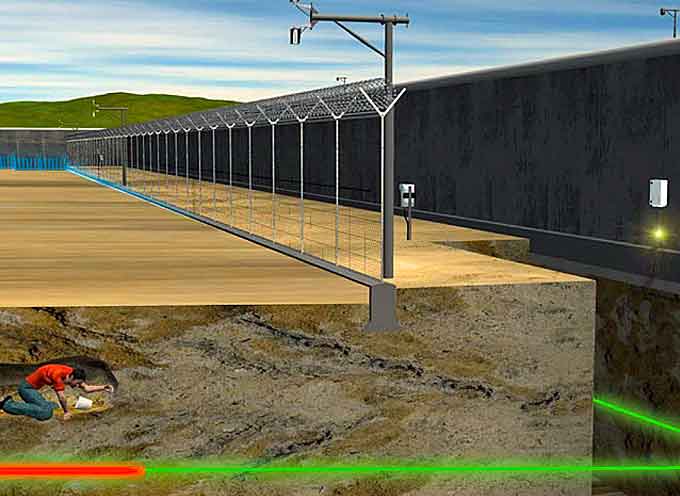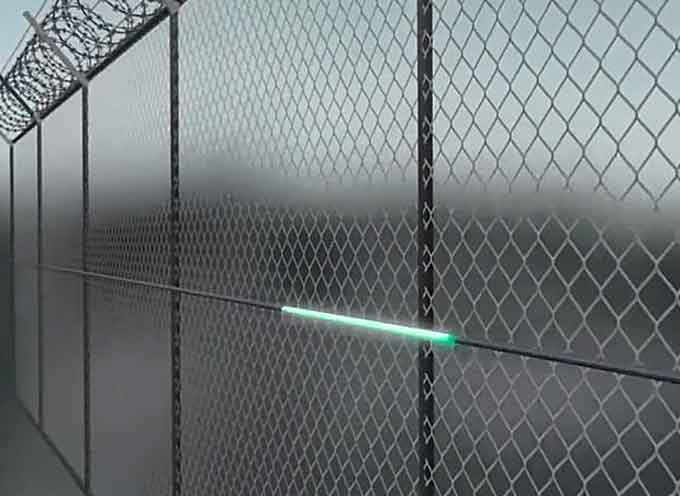
Senstar Corporation has delivered the perfect perimeter intrusion detection (PIDS) solution to protect the perimeter of one of North America’s largest cargo airports.
Due to the facility’s unique perimeter security requirements, Senstar combined multiple technologies to form a comprehensive system that effectively protects the airport and keeps the nuisance alarm rate (NAR) low.

“With a busy road running along one side of the airport’s five-mile perimeter, and people using the airport’s fence to lean on while waiting at bus stops, a fence-mounted solution alone would have been an NAR nightmare,” said Nancy Marshall, Senstar’s Executive Director of Business Development.
“By combining multiple technologies, we created a system in which a single alarm is not enough to trigger a response, but, if multiple alarms are received, the threat is deemed to be real and a response is initiated.”
Complicating security of the airport’s 26,400 ft (5 mi) perimeter is a busy road that includes several bus stops.
Many people use the fence as a resting place while waiting for the bus, which, from a perimeter intrusion detection perspective, is a nuisance alarm rate (NAR) nightmare!
The airport’s previous experience with perimeter intrusion detection (PIDS) had demonstrated this, as a video surveillance and analytics system installed along the perimeter fence in the mid 2000s was shut off after only a couple of weeks because of the hundreds of false alarms being received.
(Learn More about Senstar’s Ranging Fiber Optic Intrusion Detection Sensor for Fences, Wall and Buried Pipelines. Courtesy of SenstarCorp and YouTube)
When combined with poor quality video images that made distinguishing what was causing an alarm virtually impossible, the system was basically unmanageable.
Video surveillance and analytics technologies have come a long way in the past 10 years. These systems are currently very viable and successful solutions for perimeter intrusion detection.
As well, in initial research for this project, the airport had consulted with other local facilities with long perimeters who used older generation intrusion detection systems and the feedback wasn’t very positive.
Primarily due to the wide variety of weather conditions in the area, the facilities were constantly dealing with high NAR.

“We were hesitant to move forward with any PIDS solutions,” said the airport’s project lead.
“We had no confidence because of our own experience, and we’d heard horror stories of huge amounts of money and high NARs from others.”
The airport enlisted A&E firm Faith Group LLC to find a suitable system that could effectively protect the long perimeter while addressing NAR.
Faith Group concluded that the site needed multiple technologies, comprised of both fence-mounted and buried solutions.
The idea is that an alarm on any one technology is not enough to trigger a response, but, if alarms from multiple detectors are received, the threat is deemed to be real and a response is initiated.

“We knew a multi-layer system was needed from the get-go,” said Paul Koebbe, Sr. Systems Consultant with Faith Group. “Single sensing with the fence being so close to a public space and public transportation was just too challenging.” Faith Group looked at various system options, and fiber optic fence-mounted intrusion detection combined with buried detection proved to be best solution.
Critical to the design was a need for cut immunity to provide for continued operation in case of random system damage.
In accordance with standard business process, an RFP was issued and integrator/installer Standard Electric was selected to execute the project with Senstar systems.
The solution’s operational characteristics, including its ability to manage alarms from the multiple systems and Senstar’s Network Manager software’s Alarm Logic Engine feature, aided in the selection.
While the ability of fence-mounted and buried systems to combine into a comprehensive security solution was key to this project, it was also their differences that make this multi-layer solution a success.
(Learn More about Senstar’s FiberPatrol perimeter intrusion detection system (PIDS), includes Fiber Optic Intrusion Detection Sensor for Fences, Walls and Buried Pipelines. Courtesy of SenstarCorp and YouTube)
Using different technologies to detect intrusions, the systems have different vulnerabilities, meaning something that may affect the function of one system, won’t affect the other.
For example, extreme weather can cause fence mounted sensors to false alarm, but buried sensors are unaffected.
On the other hand, buried sensors can occasionally be affected by lightning, but fiber optic sensors are immune.
These different vulnerabilities help to ensure at least one layer of security is functioning at all times, providing peace of mind to airport officials.
The multi-layer intrusion detection system has been successfully up and running for several months with a very low NAR, and the airport has high praise for Senstar and Standard Electric.
“It was an excellent experience,” said the airport’s project lead.
“Standard Electric was very confident in the (Senstar) products. They told us to ‘Relax. We are going to do this right and you’re going to be extremely satisfied.’ And we are.”
(Learn More about how Senstar has been safeguarding people, places and property with the world’s largest portfolio of perimeter intrusion detection sensors for over 35 years. Courtesy of SenstarCorp and YouTube)
Now combined with world-class video management systems and analytics (formerly Aimetis), Senstar offers a comprehensive suite of proven technologies that work together to reduce complexity, improve performance and unify support.















